In 1975, a young Lorenzo Fluxà wandered through the shops on Serrano Street in Madrid with a mission: to sell a unique shoe, Camper's Camaleón model, made of leather and canvas and with a recycled tire sole. A footwear of peasant inspiration and a unisex vocation that he tried to place among hundreds of pairs of strict Castilians. The word unisex generated rejection at that time. “I don't know what it is, but I don't want it in my store,” they said many times to the businessman who had created a revolutionary brand within the family firm founded by his grandfather Antonio in 1877. The new seal was presented to the world with a slogan that fit very well with the zeitgeist that Spain lived: “For a freer walk.”
Almost 50 years have passed since that hard door-to-door. Camper is today a global brand directed by Miguel Fluxà, fourth generation of the family, with 350 stores around the world. It ends 2023 with a historical sales record, 225 million euros, 20% more than in 2022 and 25% more than in 2019. Its catalog has 500 models and two of the most copied shoes in the world have come out of its workshops: the Pelotas (with a lifetime guarantee and more than 11 million pairs sold) and the Peu. “Welcome those who copy us because they will also copy our mistakes,” Fluxà will say laughing at some point in this interview. And he will conclude: “As a creative company I don't admire them, but I also tell you that they know what they copy, only what sells well and works.”
If in the eighties Javier Mariscal and Miquel Barceló showed off their Campers, in 2023 Rosalía did so on Instagram with the Kobarah sandals and Úrsula Corberó with the Tossu sneakers. Camper seems to navigate through time and be extremely ductile and intelligent. The last twist was to hire Achilles Ion Gabriel in 2019, a young Finnish designer who had worked for COS and for Marni during Consuelo Castiglioni's time, as creative director of Camperlab, his most radical label. In the middle of the pandemic he was appointed creative of the entire brand. Achilles moved to Mallorca and within a year the brand entered the wish list of the elusive Generation Z.

Anna Huix
We brought together Miguel Fluxà (48 years old), CEO of Camper, and Achilles Ion Gabriel (36), its creative director. We do it in Son Forteza, the family home in Alaró (Mallorca) that houses part of the Camper offices, an organic garden and an olive grove. Fluxà welcomes us in jeans, polo and sneakers; Ion Gabriel is wearing a Balenciaga jacket and pants. Closed black, and it has been through the makeup artist's brushes before.
They both seem very comfortable in their place. Mixed and shaken, the combination works. On the one hand, the radical and colorful personality of Achilles (although today he wears black because he says: “It is easier to work with colors if you wear black”), and on the other, the slow business genius of Fluxà, who has managed to 40% of Camper's business is digital and in its case the word sustainability is much more than a slogan of marketing. Together they have made Camperlab, a flagship label, created to build a brand image but not to sell, a resounding commercial success. “We are in a good moment, the brand is strong due to the product and communication, but it is a calm place, of maturity. Camper is 48 years old and in that time we have gone through better and worse situations, but we have always kept our values very strong. I think that in product innovation we are in an incredible moment that has connected with generation Z. The company's values, diversity, innovation and being very open to change have conquered the youngest people,” reflects Fluxà.
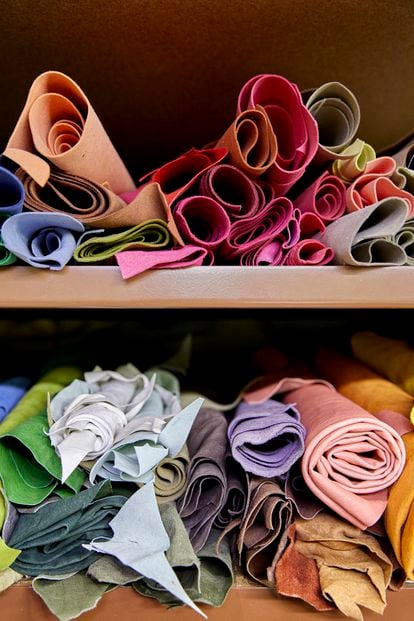
The Kobarah sandal, one of the models from the first Camperlab collections signed by Ion Gabriel, is perhaps one of the symbols of that connection. Fun and sustainable (that duality is possible). Unprejudiced and totally unisex (their size goes up to number 44). Commercial and functional. Achilles has said many times that he does not work for museums, but so that people wear his shoes every day. But he doesn't want to make serious and boring shoes either, so to wear one of his creations you have to have self-confidence and attitude.
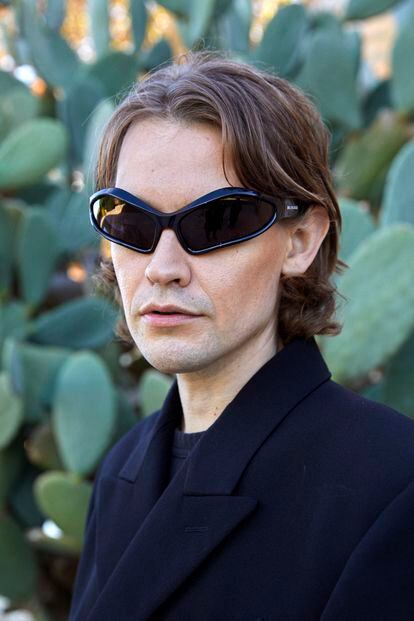
Miguel went to look for him in Paris, where Ion Gabriel, a pioneer of genderless, He occasionally collaborated with several brands, including Marni, Sunnei and Marimekko, while working on his own, radical and eponymous brand. Fluxà offered him his first “office” job. If we buy a villa with a pool as an office in the interior of Mallorca, between Sant Joan and Sineu, silent, paradisiacal and surrounded by nature, where Achilles says he sleeps little, designs at night and starts answering emails at seven in the morning tomorrow. He moved to the island during the pandemic and left his hectic Parisian life. “Living in Mallorca definitely helps to understand Camper. The island is part of his DNA. I live in the middle of nowhere, on a farm with no neighbors, and that helps me create and concentrate. I also travel. I would say too much, I spend half my time on the island, and the rest, around the world,” says the designer, who in five years would like to see himself taking at least one day off a week.
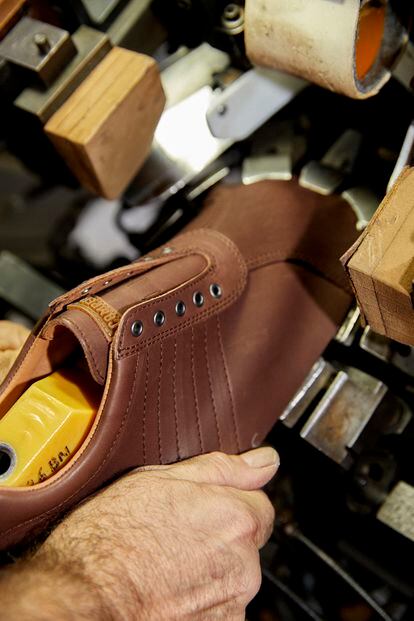
His mission, he agreed with Miguel, was to take the brand one step further, promote an open, avant-garde design, develop new strategies and connect with the youngest. “That's exactly what I did. I think I have more than achieved it.” Achilles saw all the possibilities in a brand with an important foundation in several generations and an unprejudiced vision, which since 2002 had already been practicing sustainability with campaigns such as the one that asked customers: “If you don't need it, don't buy it.” It was a matter of learning to work side by side with people whose parents and grandparents had already worked at Camper.
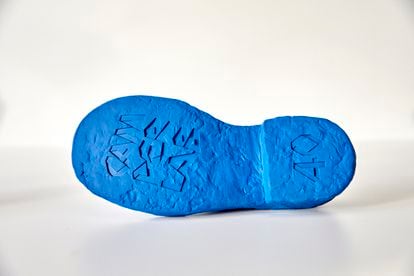
Seeing some of his designs for Camperlab anyone would wonder if those shoes are comfortable and light. The doubt offends. “I don't have to think about the technical aspects of a shoe, it is something that is very integrated into me, it is deep in my training, I don't have to worry about it, and that allows me to concentrate on aesthetic creation,” he says. Fluxà explains that it is a great triumph to have connected with the new generations, but also a challenge. “We are in search of balance: to continue being disruptive, but without losing our connection with our usual customers.”
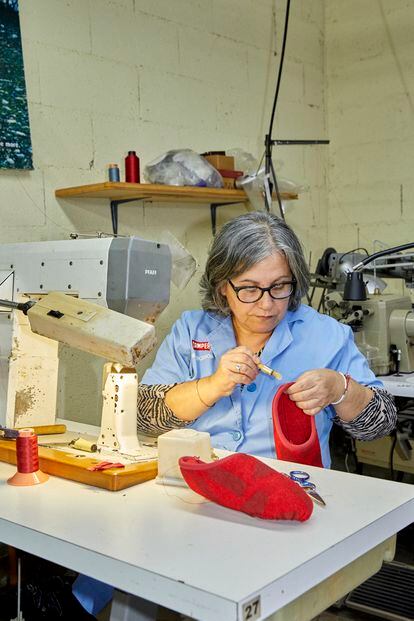
We asked Fluxà what things can never be sacrificed in a designer shoe. “You can risk almost everything except comfort, functionality and quality. Regardless of aesthetic, our shoes are for wearing,” she says, pointing to her feet. “Today I'm wearing the Tossu, they have a very high innovation process, made entirely in Spain, it is a very sustainable shoe that can be recycled almost completely and is tremendously comfortable, the aesthetics are avant-garde, but they are very comfortable.” The Tossu are Camperlab's sustainable sneakers made up of an inner sock and recyclable injection-molded panels.
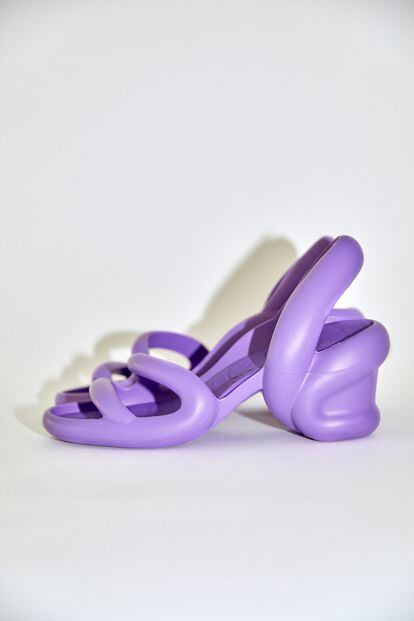
Achilles says that for him, devising the structure of the shoe is not difficult, the complicated thing is translating it into a sustainable model. In these four years the company has managed to ensure that 80% of production is made with clean materials, although they recognize that it is difficult to be completely recyclable. Leather, the only material that guarantees the durability of a shoe, is key to sustainability. 23 billion shoes are manufactured in the world, 95% end up in landfills.
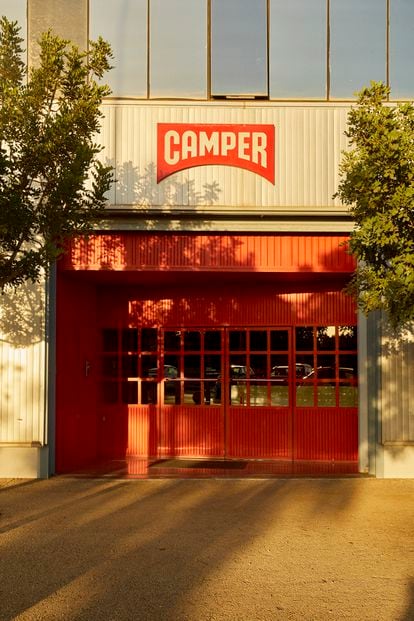
How long should a pair of shoes last to be sustainable? Fluxà responds: “The ideal would be for it to last a lifetime and be repairable if it breaks. It is not very correct for me to say it because we are dedicated to selling shoes, but my conclusion and that of Camper is that there is nothing more sustainable than quality, the possibility of repairing the product and responsible consumption. If a shoe has nine months more useful life, its environmental impact is reduced by 30%.” A shoe has between 40 and 50 elements, so it is difficult to recycle completely. Aft
er much experimentation, Camper has reached sustainability by reducing those pieces, it did so in 2000 with the Wabi model, recycled and recyclable, and with only three elements: the outer construction, the insole made of tatami and the sock.

Miguel Fluxà says that at Camper the processes are very transparent, for example, the CO2 footprint of each model is measured, but it is nothing new for them. “From our name – Camper means peasant – the connection with nature and the rural world was already explicit. Our first model was a recycled shoe, the result of necessity, not abundance, because the farmers had to make their own shoes.”
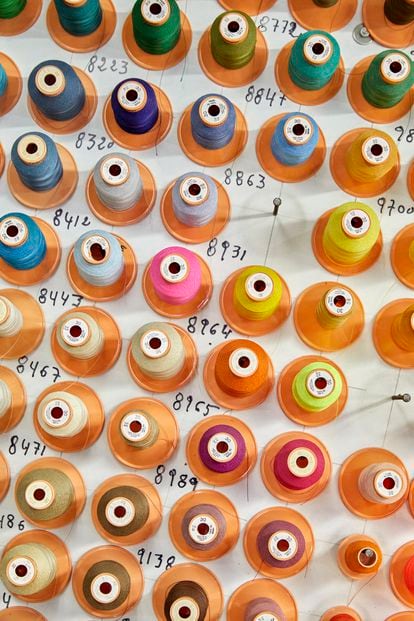
In the Camper workshops, in Inca, 31 kilometers from Palma, work is being done on several fronts. The soles are sewn on a machine: “A difficult and complicated job, if you make a mistake you have to take another shoe and start from scratch,” the workers explain to us. In another room, work is being done to personalize the Balls of a client who has had his initials put on them. Lorenzo Fluxà stops by and checks out some prototypes. The same Fluxà that managed to place its tire-soled peasant shoes in the most exclusive stores in Madrid. It seems like no time has passed here. There is no rush to build these jewels of Mallorcan footwear, but it is an illusion. Almost half a century has passed. Just look at Rosalía's feet wearing her electric orange Kobarah at her last summer in London. That, without a doubt, is also zeitgeist and it's also a Camper.

Subscribe to continue reading
Read without limits
_
#Camper #historical #sales #record